Modern Methods of Construction -Details and Applications
A wide variety of modern methods of construction (MMC) techniques and products have been developed that have completely changed the behavior of construction industry from what it was before. This change is amazing and is in the way to bring more and more developments in this sector.
What are Modern Methods of Construction?
Modern construction methods (MMC) are methods that are developed in construction industry with proper planning and design so that each project reduces the construction time, cost and maintain overall sustainability.
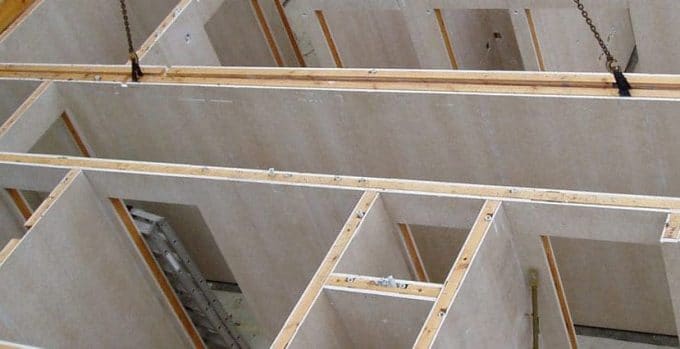
There are many methods followed and constructed in the present scenario widespread. Most famous and highly applied methods of modern construction are listed and explained below.
Types of Modern Methods of Construction
The different MMC used in construction field includes:
- Precast Flat Panel System
- 3D Volumetric Modules
- Flat Slab Construction
- Precast Cladding Panels
- Concrete Wall and Floors
- Twin Wall Technology
- Precast Concrete Foundation
- Concrete Formwork Insulation
Precast Flat Panel System
This method of construction involves the procedure of making floor and wall units off site. For this, separate factory outlets and facilities is required.
Once the panel units are made as per the design specification and requirements, they are brought to the site and placed. This method is best suited for repetitive construction project activities.
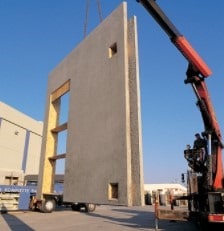
Fig.1. Precast Flat Panel System
The panels manufactured has the services of windows, doors and the finishes. This method also brings building envelope panels which are provided with insulation and decorative cladding that is fitted by the factory which can also be used as load – bearing elements.
3D Volumetric Construction
As the name implies, the 3D volumetric construction involves the manufacture of 3D units in the form of modules in off site. At the time of installation, they are brought to the site and assembled module by module.
Each modular unit manufactured are 3D units, hence this construction is called as 3D volumetric construction or modular construction.
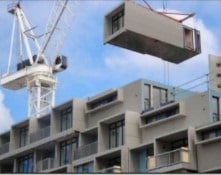
Fig.2: 3D Volumetric Construction
The transportation of the modules can be carried out in various forms or methods. This can involve the transportation of the basic structure or a completed unit with all the internal and external finishes, services installed within it, that the only part remaining is the assembly.
The factory construction brings different unit of same product maintaining their quality throughout. Hence this method is best suited for repetitive projects so that rapid assembly of the products is possible.
Flat Slab Construction
The flat slabs are structural elements that are highly versatile in nature. This is this versatility that it is used widely in construction. The flat slab provides minimum depth and faster construction. The system also provides column grids that are flexible.
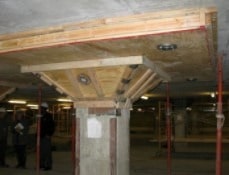
Fig.3.Flat Slab Construction
Wherever it is necessary to seal the partitions to the slab soffit as a reason of acoustic and fire concerns, the flat slabs are a desirable solution. When compared with other forms of construction, the flat slabs are faster and more economic in nature.
The construction of flat slabs can be completed with good surface finish for the soffit, this enables to utilize he exposed soffits.
The flat slab construction is also a means of increasing the energy efficiency as this allows the exploitation of building thermal mass in the design of ventilation, heating and the cooling requirements.
Precast Concrete Foundations
For the rapid construction of foundation, the precast concrete system can be employed. This method is more suited for a bespoke design.
Here, the elements required for the construction of foundation are constructed separately in the factory (off site) and brought to the site and assembled. The manufactured product must have the assured quality as specified by the designer.

Fig.4. Precast Concrete Foundations
The foundation assembled is mainly supported by concrete piles. During assembling, both the systems are connected together. These foundation systems helps in increasing the productivity, increase quality, decrease the soil excavation quantity.
This is best suited for extreme and adverse weather conditions. When the construction is dealt on a highly contaminated ground, this system of construction is a best choice.
Twin Wall Technology
The twin wall technology is a hybrid solution of wall system that combines the qualities of erection speed and precast concrete with the structural integrity of in-situ concrete. This type of wall system guarantees structural integrity and waterproof reliability for the structure.
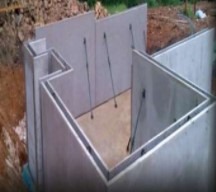
Fig.6: Twin Wall Technology
The twin wall system has two walls slabs that are separated as shown in the figure-6. The two slabs are separated by a cast in lattice girders. The procedure involves:
- The wall units are placed in the site.
- The twin units are propped temporarily.
- The wall units are later joined by means of reinforcing.
- The gap between the wall units are filled by means of concrete.
This system of construction is faster than normal construction methods and economical. The twin wall system is mainly employed in association with the construction of precast floors.
Insulating Concrete Formwork
The system of insulating concrete formwork (ICF) have twin walled panels that are either polystyrene panels or blocks are employed. These are built quickly to create the formwork as the wall of the buildings.
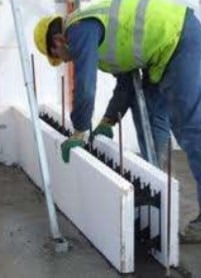
Fig.7. Insulating Concrete Formwork
The formwork that is made is filled with concrete. This concrete is factory produced that have quality assurance so that a ready – mixed concrete. Mostly the mix is ready mix concrete.
Higher level of thermal insulation is provided by expanded polystyrene blocks. The concrete core will provide good robustness and better sound insulation.
Precast Cladding Panels
The cladding system is the installation of a material over another that finally act as a skin or a layer. This system of layer is not only intended for aesthetics, but it can help in controlling the infiltration of the weather elements.
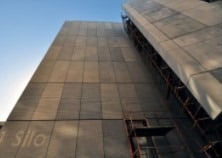
Fig.8. Precast Cladding Panels
No kind of waterproof condition is provided by the cladding. Instead, the cladding is a control measure against water penetration. This safely help in directing the water or the wind so that there is control of the runoff. This helps to prevent the infiltration into the building structure.
Concrete Walls and Floors
Concrete walls are mainly applied for seat walls, retaining wall, decorative exterior, and interior finishes.
The concrete is also used a flooring material. As per the latest technology, the concrete floors can be provided with good finish to provide smooth and attractive flooring.
When compared with any other material, the concrete floors provide a wide variety of material for applications like acid-stained painted, radiant floors, overlays, and micro toppings. The concrete flooring can also be called as cement flooring.
When compared with other flooring types, concrete flooring is affordable and maintenance is easy. Proper sealing of concrete flooring can be cleaned by a dust mop.
Comments